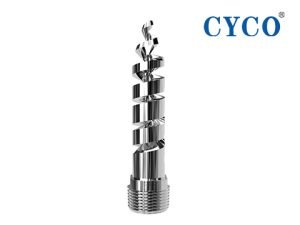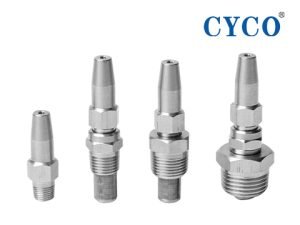An automated control system is widely used in modern industrial production, which can realize the automatic control and regulation of the spraying process to improve the production efficiency and product quality.
This article will describe the working principle of the spray automatic control system in detail, helping readers to better understand and master the system.

Components of a spray automatic control system
The main components are as follows:
1. Sensors: used to detect various parameters in the spraying process, such as liquid flow, pressure, temperature, etc.
2. Controller: based on the parameter values and control objectives detected by the sensors, calculates the required opening time and flow rate of the nozzle and outputs the control signal to the actuator.
3. Actuator: adjust the opening time and flow rate of the nozzle according to the control signal from the controller to realize the automatic control of the spraying process.
4. Nozzle: atomizes the liquid into a mist according to the adjustment of the actuator to achieve the spray effect.
5. Pipes and accessories: connect the components to form a complete spray automatic control system.
The working principle of the spray automatic control system
Various parameters in the spraying process are detected by sensors, and the controller calculates the required opening time and flow rate of the nozzle according to the detected parameter values and the control targets, then outputs the control signals to the actuators. The actuator adjusts the opening time of the nozzle and the flow rate of the liquid according to the control signal to realize the automatic control of the spraying process.
The specific steps are as follows:
1. The sensor detects various parameters of the spraying process, such as liquid flow, pressure, temperature, etc., and transmits the values of these parameters to the controller.
2. The controller calculates the required nozzle opening time and liquid flow rate according to the preset control target and control algorithm, then outputs the control signal to the actuator.
3. The actuator adjusts the opening time of the nozzle and the flow rate of the liquid based on the control signal, realizing the automatic control of the spraying process.
4. The nozzle atomizes the liquid into a mist to achieve the spray effect according to the adjustment of the actuator.
5. The controller monitors the various parameters of the spraying process continuously and adjusts the opening time of the nozzles and the flow rate of the liquid to ensure the stability and consistency of the spraying process depending on the actual needs.
Applications of spray automatic control system
It is used in a wide range of applications in many fields, such as chemical, pharmaceutical, food and agriculture.
In the chemical industry, spray automation systems can be used for chemical reaction control and heat transfer control in production processes.
In the pharmaceutical field, it can be used for spray drying and mixing during drug preparation.
In the food area, it can be used for spray drying and cooling of beverages and food products.
In agriculture, it can be used for spray application of pesticides and fertilizers.
Through the use of spray automatic control system, production efficiency, product quality and resource utilization can be improved to achieve the automation and intelligence of industrial production.
Conclusion
This paper introduces the working principle and application of spray automatic control system in detail, including the composition of the system, working principle and application examples.
Spray automatic control system is an advanced automated control system, which can realize the automatic control and regulation of the spraying process and improve the production efficiency and product quality.
Through the use of spray automatic control system, it can realize the automation and intelligence of industrial production, and bring great impetus to the development of modern industrial production.






